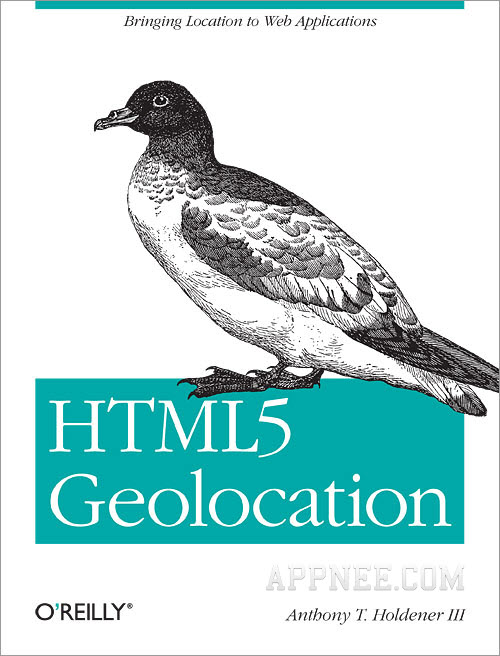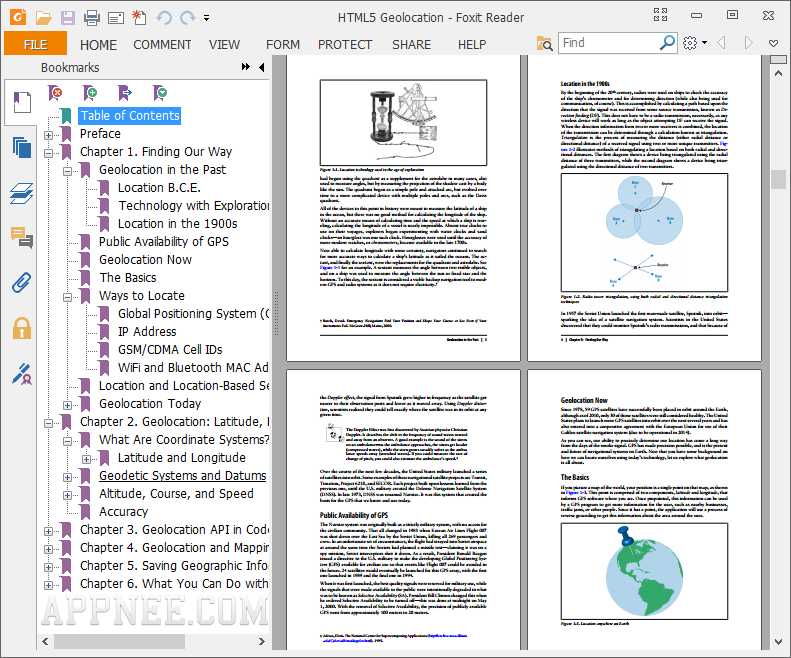
HTML5's mightiness, we don't need to introduce too much. Of which, the Geolocation is one of its important features - providing the function for determining user's location. With this feature, we can develop cool web apps based on geographical location information (especially by calling the Google Maps interface).
HTML5 Geolocation: Bringing Location to Web Applications was written by Anthony T. Holdener III in 2011. It has only 116 pages (subdivided into 6 chapters), so its orientation is just a booklet for beginners to get started with.
This book introduced most uses of HTML5 Geolocation API in the browser-based web apps, and showed readers its "write once, deployed everywhere" feature through a lot of examples. Its specific contents include: introduction of the basic knowledge of geographic location, Geolocation API's support situcations in all mainstream web browsers, as well how to use it and other common mapping tools to implement an embedded map similar to the Google Maps.

Table Of Contents
- Chapter 1 Finding Our Way
- Geolocation in the Past
- Public Availability of GPS
- Geolocation Now
- The Basics
- Ways to Locate
- Location and Location-Based Services (LBS)
- Geolocation Today
- Chapter 2 Geolocation: Latitude, Longitude, and More
- What Are Coordinate Systems?
- Geodetic Systems and Datums
- Altitude, Course, and Speed
- Accuracy
- Chapter 3 Geolocation API in Code
- W3C Geolocation API
- The W3C Geolocation API Does More
- The Geolocation Object
- Get the User’s Position
- Update the User’s Position
- Handling a Successful Request
- Handling an Error from the Request
- Privacy
- Chapter 4 Geolocation and Mapping APIs
- A Google Maps Example
- An ArcGIS JavaScript API Example
- Chapter 5 Saving Geographic Information
- KML
- Shapefiles
- Databases
- Chapter 6 What You Can Do with Geolocation
- Geomarketing
- Geosocial
- Geotagging
- Geo-applications
- HTML5 and Geolocation
Related Links
Download URLs
| Format | Download | Size |
 |
7.84 MB | |
| EPUB |  |
1.76 MB |